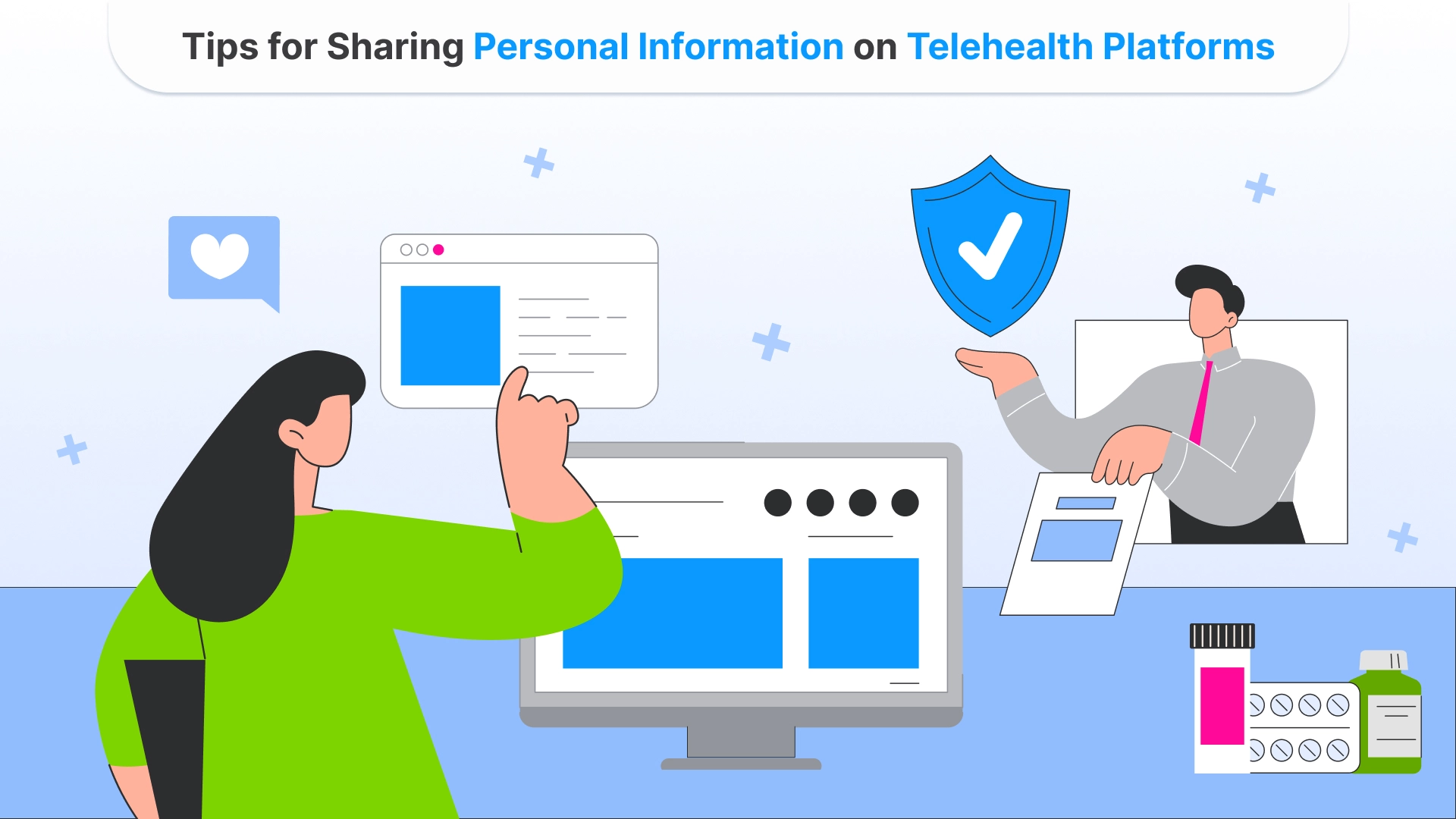

How to Ensure Telehealth Software Security and Privacy
In today’s digital landscape, the accessibility of remote healthcare through telehealth platforms has surged, particularly amidst the COVID-19 pandemic. While telehealth offers unparalleled convenience, it also presents significant privacy and security challenges that the healthcare industry must address. Safeguarding sensitive patient information from the point of collection to utilization is imperative to maintain trust and uphold ethical standards.
What Does Telehealth Software Security Mean?
Telehealth software security encompasses a comprehensive set of measures and protocols aimed at preserving patients’ confidentiality, integrity, and privacy. As telehealth services continue to gain traction, the need for robust security measures becomes increasingly urgent. Key components of telehealth software security include data encryption, robust authentication mechanisms, secure network connections, and stringent user access controls. These measures collectively aim to ensure patient safety and the delivery of high-quality healthcare services.
Privacy and Security Concerns
Telemedicine introduces various privacy and security concerns, which have been exacerbated by the rapid adoption of remote healthcare solutions:
Data Protection: Recent data from the Cybersecurity and Infrastructure Security Agency (CISA) indicates that telehealth visits surged by over 60% in 2023 alone, driven by the ongoing need for remote healthcare services amidst global challenges. With this significant increase in telehealth usage, protecting patient data becomes paramount. Studies conducted by the Healthcare Information and Management Systems Society (HIMSS) reveal that 67% of healthcare organizations reported at least one data breach incident in 2023, showcasing the vulnerability of patient information during telehealth interactions.
Storage and Retention: The proliferation of electronic health records (EHRs) and remote monitoring devices raises concerns about the storage and retention of patient data. According to recent research by the Ponemon Institute, 62% of healthcare organizations experienced a data breach involving patient medical records in 2023, highlighting the persistent challenges in securing sensitive healthcare data. These breaches not only pose privacy risks but also expose healthcare providers to regulatory penalties and reputational damage.
Device Vulnerabilities: As telemedicine relies on various devices and platforms for remote consultations and monitoring, cybersecurity threats continue to evolve. The Cybersecurity Ventures Cybercrime Report predicts that cybercrime will cost the global economy $10.5 trillion annually by 2025, with healthcare being one of the most targeted sectors.
Best Practices for Telehealth Privacy and Security
Implementing best practices for telehealth privacy and security involves several critical factors:
Secure Communication Channels: Ensuring that all telehealth services are conducted over encrypted communication channels to protect patient confidentiality.
Multi-factor Authentication: Implementing multi-factor authentication mechanisms to verify user identities and prevent unauthorized access.
Data Encryption: Securely storing patient data through encryption to mitigate the risk of unauthorized access and maintain data integrity.
Employee Training and Compliance: Conducting regular employee training on privacy and security protocols and ensuring compliance with relevant privacy regulations such as HIPAA.
Regular Updates and Vulnerability Checks: Ensuring that telehealth software and security measures are regularly updated and subjected to vulnerability assessments to address emerging threats promptly.
Privacy and Security Practices to Avoid in Telehealth
While adopting best practices is crucial, it’s equally important to steer clear of practices that could compromise patient data security:
Unsecured Communication Channels: Avoid using regular email or messaging platforms for telehealth communications, as they lack encryption and leave sensitive data vulnerable to interception.
Weak Authentication Mechanisms: Neglecting to implement proper authentication mechanisms, such as weak passwords or the absence of multi-factor authentication, increases the risk of unauthorized access to telehealth systems.
Lack of Training and Awareness Programs: Inadequate training and awareness programs for healthcare professionals and staff can result in accidental mishandling of patient data.
Failure to Perform Regular Software Updates: Neglecting to perform regular software updates and security patches can leave telehealth systems vulnerable to known vulnerabilities.
Ignoring Privacy Regulations: Failing to comply with privacy regulations, such as the Health Insurance Portability and Accountability Act (HIPAA), can lead to legal consequences and compromise patient privacy.
By avoiding these practices and prioritizing strong privacy and security measures, healthcare providers can enhance the confidentiality and integrity of telehealth services.
Tips for Sharing Personal Information on Telehealth Platforms

Ensuring privacy and security when sharing personal information on telehealth platforms is essential for maintaining patient trust and confidentiality:
Establish Trust: Establish trust with patients by consistently using secure communication methods, such as encrypted telehealth platforms.
Display Healthcare Qualifications: Displaying healthcare qualifications and credentials on telehealth platforms can reassure patients of legitimacy and expertise.
Emphasize Secure Networks: Emphasize the use of secure, private networks for both patients and providers to communicate and share information.
Provide Comprehensive Training: Provide healthcare professionals with comprehensive training on privacy and security protocols to ensure they handle patient information securely.
Be Transparent: Be transparent with patients about the security measures in place to protect their personal information.
In Conclusion: Are Telehealth Software Platforms Safe?
While telehealth platforms pose inherent risks, reputable ones prioritize the protection of patient data through encryption, secure authentication, and compliance with privacy regulations. Regular updates, snug network connections, and adherence to best practices further enhance the safety and security of these platforms, instilling confidence in patients and healthcare providers alike.
Faq
What are the key security measures that need to be in place for telehealth services?
+Ensuring the integrity of telehealth services requires implementing robust encryption protocols to safeguard sensitive patient information. Authentication mechanisms such as multi-factor authentication must be employed to verify the identities of both patients and healthcare providers, mitigating the risk of unauthorized access. Additionally, regular security audits and updates to address vulnerabilities are essential to maintain the confidentiality and trustworthiness of telehealth platforms.
How can healthcare providers ensure the privacy and confidentiality of patient data during telehealth consultations?
+Healthcare providers can safeguard patient data during telehealth consultations by employing robust encryption methods for data transmission, implementing secure authentication protocols, and ensuring compliance with relevant privacy regulations. By prioritizing confidentiality measures such as utilizing HIPAA-compliant platforms and training staff on best practices for data protection, healthcare organizations can foster trust and uphold patient privacy in the digital realm of telehealth consultations.
What are the security regulations and standards that apply to telehealth platforms?
+Telehealth platforms must adhere to stringent security regulations and standards to safeguard sensitive patient data, including HIPAA (Health Insurance Portability and Accountability Act) compliance in the United States. Additionally, adherence to ISO 27001 standards for information security management ensures robust protection against potential vulnerabilities.
What encryption methods are commonly used to secure telehealth communications?
+Common encryption methods frequently employed to safeguard telehealth communications include AES (Advanced Encryption Standard), RSA (Rivest-Shamir-Adleman), and TLS (Transport Layer Security). These robust cryptographic techniques ensure the confidentiality and integrity of sensitive patient information exchanged between healthcare providers and patients during remote consultations.
Tell us about your project
Fill out the form or contact us

Tell us about your project
Thank you
Your submission is received and we will contact you soon
Follow us
